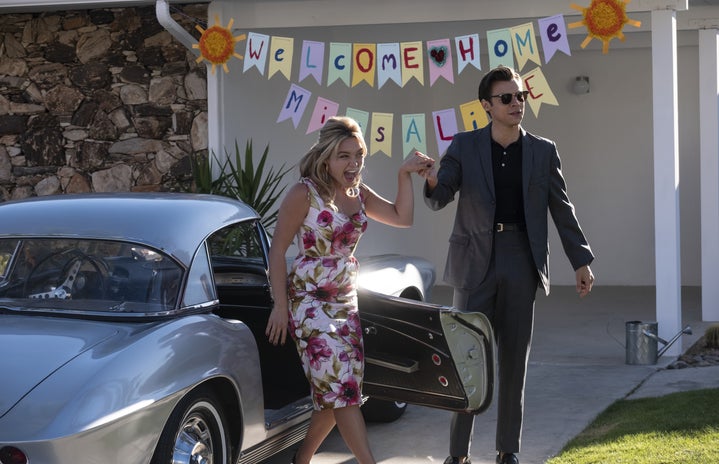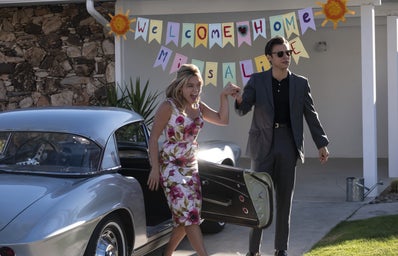I am not one for suspense. I watch movies for fashion, for the happy endings, and for angsty characters. Director Olivia Wilde’s Don’t Worry Darling has all of this with a thrilling sense of what is to come, even if the ending is not the satisfying conclusion the audience expected.
To be honest, I was not sold on Don’t Worry Darling like all of TikTok, Instagram, and Twitter were. I love Florence Pugh but haven’t been able to ditch the image of her starring in her previous thriller, Midsommar. She was haunting in that film – gorily sacrificing friends and gruesomely losing family. I was not ready for more psychological trauma that the Don’t Worry Darling trailer promised.
Still, the glitzy mid-century modern setting and star casting interested me. I, like any other person on this earth, am not immune to Harry Styles’s presence. However, I disagree with him receiving all the credit for Don’t Worry Darling‘s success, as Florence Pugh metaphorically carried the project on her back. Pugh, the protagonist, was often the only person on screen and still had the audience holding their breath.
The movie stays largely in an idealized, for some (the patriarchy), 1950s world. Husbands go off to work while wives stay home in picture-perfect neighborhoods in the city of Victory. The perfection of this world is what unnerves the audience. The calm feels threatening.
Alice and Jack Chambers (Florence Pugh and Harry Styles) are a married couple living happily in Victory. Yet, Alice comes to realize there are gaps in her memory. She doesn’t remember why she is in Victory, or how her life there started. At every turn, there is a neighbor (Olivia Wilde) or husband (Harry Styles) gaslighting her into believing her confusion is unjustified insanity.
I could not pin down what exactly was happening to Alice throughout the movie. I was sure her concerns were real, but could not forecast the direction the movie was taking. While this was fun, the eventual reveal that it was all a simulation felt too unexpected. Looking back, there was no suggestion that Victory was a fictitious town, all the “glitches” applied only to Alice herself, and no other person presented inconsistencies. Yet, in the end we see there are several reasons to doubt the “realness” of Victory.
Still, the drama carried throughout and was supported by the aesthetic setting. Mid-century modern furniture, 1950’s automobiles in every color, and fashion to match made a statement in Don’t Worry Darling. The shots were cinematically gorgeous, symmetrical, and shiny. It was an easy movie to watch.
In terms of supporting features, my personal favorite was fashion. Although never quite explained, every character was always dressed to a tee, in bouncing gowns or tailored pastel suits. It was hard to complain about plot gaps when excellent outfits were served at every turn.
So, while I was not always along for the plot, Don’t Worry Darling was too sweet and thrilling to not watch.


